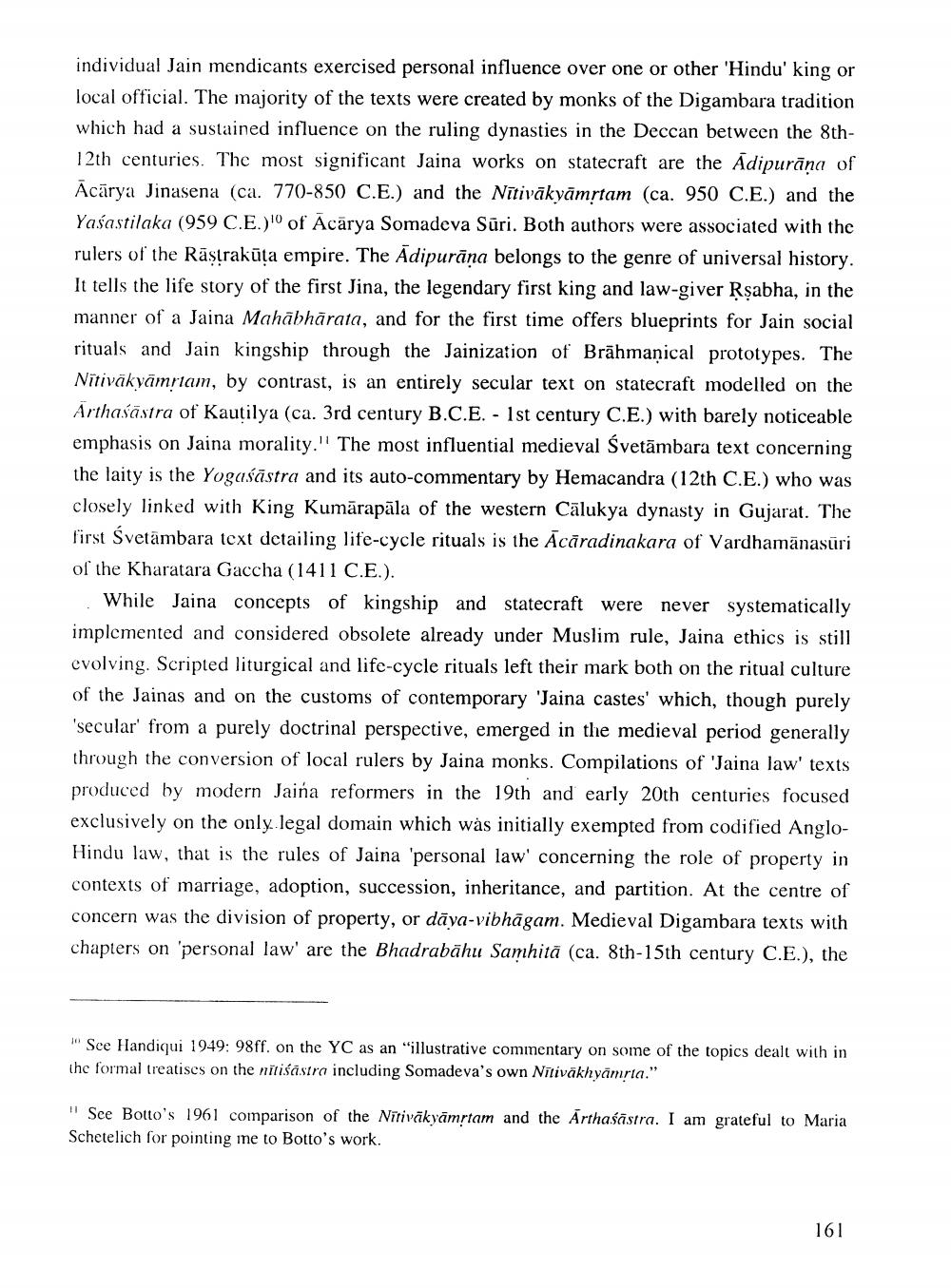________________
individual Jain mendicants exercised personal influence over one or other 'Hindu' king or local official. The majority of the texts were created by monks of the Digambara tradition which had a sustained influence on the ruling dynasties in the Deccan between the 8th12th centuries. The most significant Jaina works on statecraft are the Adipurana of Acarya Jinasena (ca. 770-850 C.E.) and the Nitiväkyämṛtam (ca. 950 C.E.) and the Yasastilaka (959 C.E.)" of Acarya Somadeva Süri. Both authors were associated with the rulers of the Rastraküța empire. The Adipurana belongs to the genre of universal history. It tells the life story of the first Jina, the legendary first king and law-giver Rsabha, in the manner of a Jaina Mahabharata, and for the first time offers blueprints for Jain social rituals and Jain kingship through the Jainization of Brähmanical prototypes. The Nitiväkyämṛtam, by contrast, is an entirely secular text on statecraft modelled on the Arthasästra of Kautilya (ca. 3rd century B.C.E. 1st century C.E.) with barely noticeable emphasis on Jaina morality." The most influential medieval Śvetämbara text concerning the laity is the Yogasästra and its auto-commentary by Hemacandra (12th C.E.) who was closely linked with King Kumarapala of the western Cälukya dynasty in Gujarat. The first Svetambara text detailing life-cycle rituals is the Acaradinakara of Vardhamanasuri of the Kharatara Gaccha (1411 C.E.).
While Jaina concepts of kingship and statecraft were never systematically implemented and considered obsolete already under Muslim rule, Jaina ethics is still evolving. Scripted liturgical and life-cycle rituals left their mark both on the ritual culture of the Jainas and on the customs of contemporary Jaina castes' which, though purely 'secular' from a purely doctrinal perspective, emerged in the medieval period generally through the conversion of local rulers by Jaina monks. Compilations of 'Jaina law' texts produced by modern Jaiña reformers in the 19th and early 20th centuries focused exclusively on the only legal domain which was initially exempted from codified AngloHindu law, that is the rules of Jaina 'personal law' concerning the role of property in contexts of marriage, adoption, succession, inheritance, and partition. At the centre of concern was the division of property, or daya-vibhāgam. Medieval Digambara texts with chapters on 'personal law' are the Bhadrabahu Samhita (ca. 8th-15th century C.E.), the
of
See Handiqui 1949: 98ff. on the YC as an "illustrative commentary on some of the topics dealt with in the formal treatises on the nitiśästra including Somadeva's own Nitiväkhyāmṛta."
"See Botto's 1961 comparison of the Nitiväkyämṛtam and the Arthaśastra. I am grateful to Maria Schetelich for pointing me to Botto's work.
161




